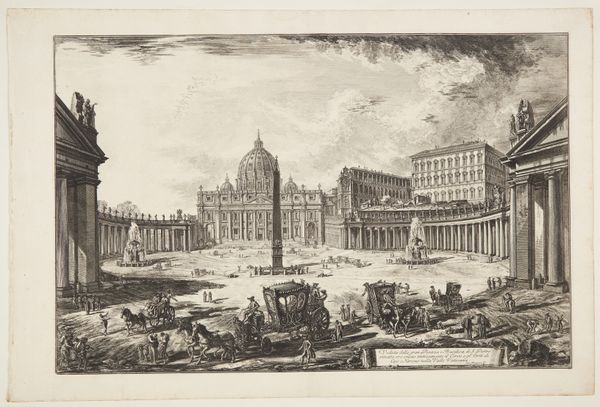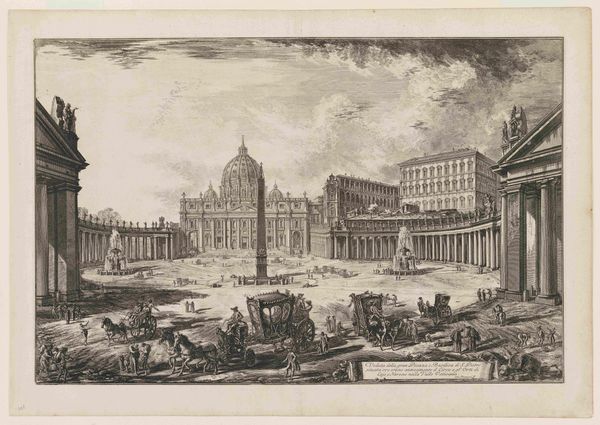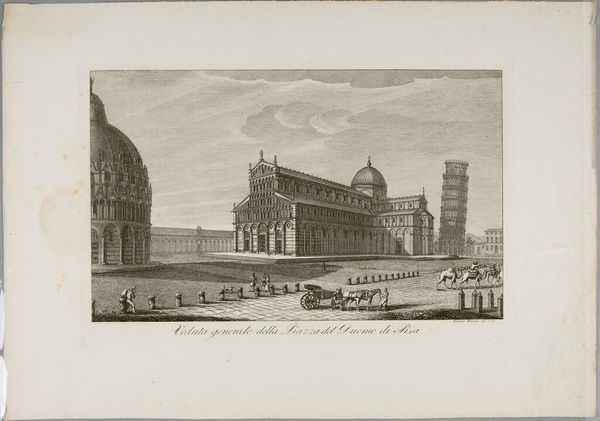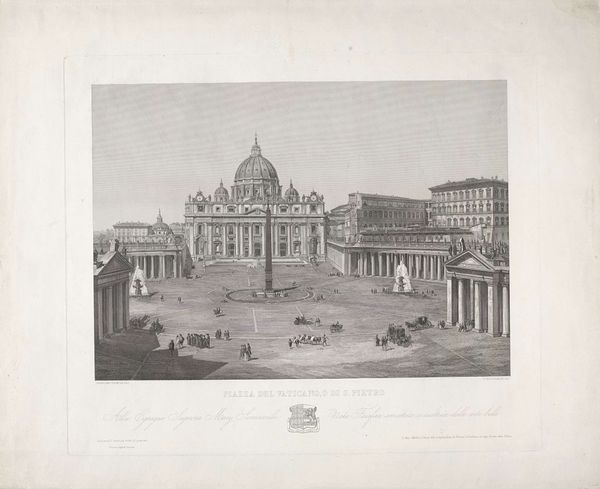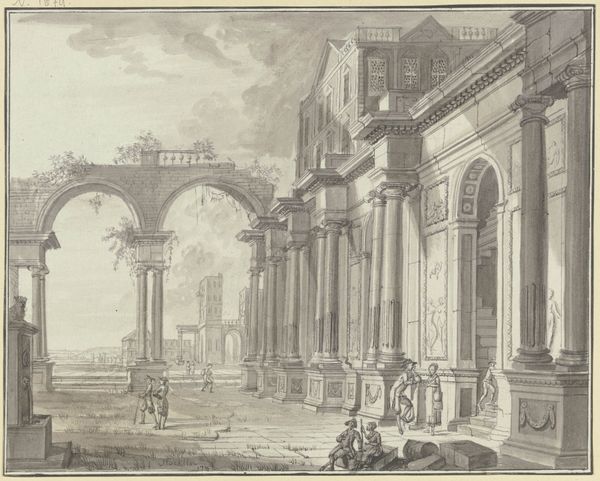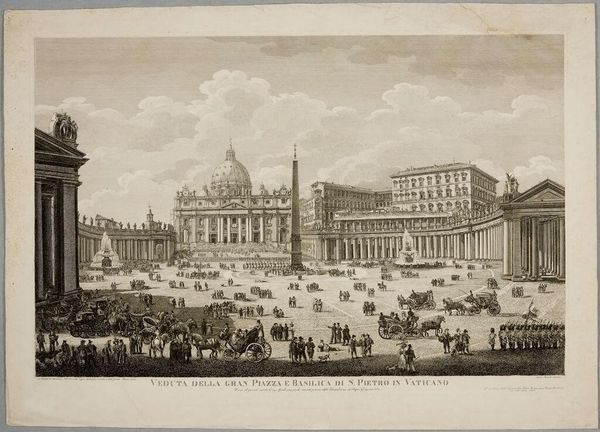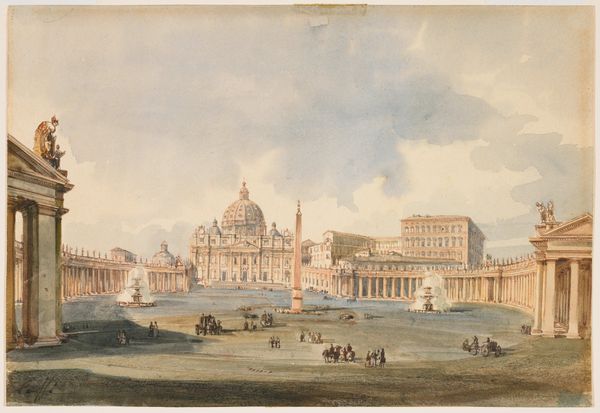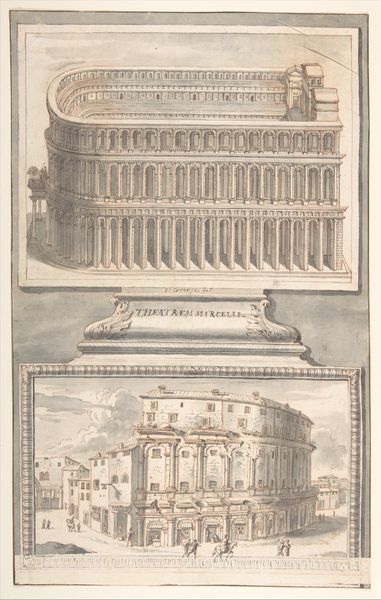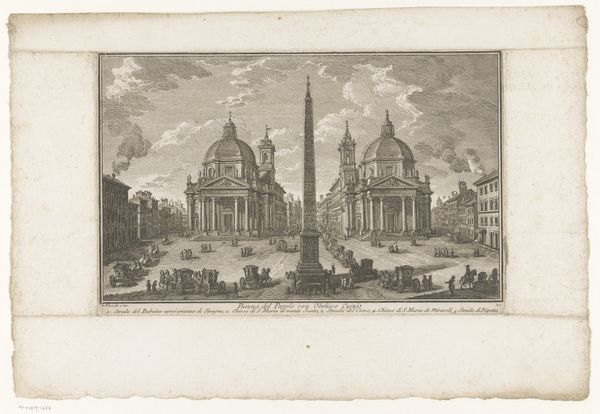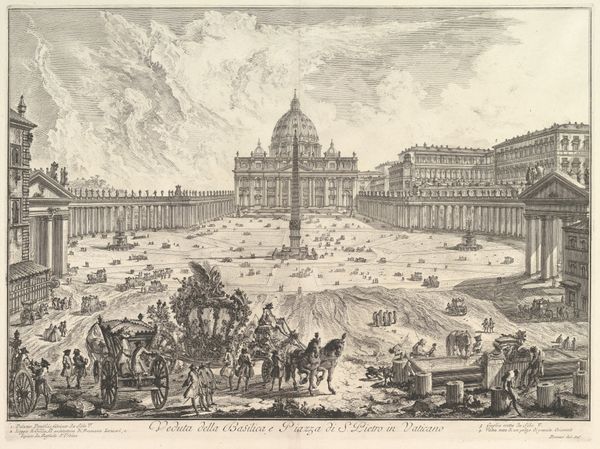
drawing, paper, pencil
#
drawing
#
neoclacissism
#
aged paper
#
toned paper
#
light pencil work
#
blue ink drawing
#
old engraving style
#
landscape
#
paper
#
personal sketchbook
#
pencil
#
19th century
#
sketchbook drawing
#
cityscape
#
watercolour illustration
#
storyboard and sketchbook work
Dimensions: height 349 mm, width 614 mm
Copyright: Rijks Museum: Open Domain
Curator: Ah, here we have Filippo Citaroni’s 1782 drawing, “Gezicht op het Sint Pieterplein in Rome”—or, “View of St. Peter's Square in Rome.” Executed in pencil on paper, it offers an expansive perspective on this iconic architectural space. Editor: There's a delicacy here, a kind of breath held. I almost feel like I’m seeing Rome through a ghost’s eyes, pale and eternal. It captures the vastness of the square, yet everyone seems small, inconsequential... dreamlike. Curator: That airy feel likely comes from the drawing's technique. The light pencil work and what appears to be toned paper provide a subtle depth, creating the atmospheric perspective. Citaroni clearly prioritizes line and form; note how he renders the colonnades and buildings with such precision. Editor: The lines almost seem to dissolve. What's interesting, to me anyway, is how this level of precision meets this feeling of transience, almost the ephemeral. It’s this odd dance between documentation and dream, a blueprint that seems destined to fade. Is that because he captured a city so mired in decay? I think it works so well, don't you think? Curator: Decay, perhaps; however, Neoclassicism sought order and clarity. These pencil sketches might have acted as templates that could be reproduced using emerging printing and etching technologies in order to popularise the Neoclassical movement in visual culture. The lines had to be consistent across other artworks. This allowed accurate and affordable engravings and reproductions to appear for the emerging bourgeoisie and tourists as 'keepsakes', creating a culture of consumption of the image itself. Editor: Fascinating. A practical kind of beauty then, in its accessibility, its replicability! That gives another angle to its apparent fragility - it was made to be copied, perhaps even disposed of. A beautiful item produced by an exploitative, capitalist structure? Hmmm. Curator: Exactly, and consider the material realities: pencil and paper, relatively inexpensive and readily available. This democratized image production and dissemination. I'm curious; do you think these mass-produced images change how people saw and understood themselves as cultured members of society? Editor: Maybe it's as simple as giving people access, allowing everyone to daydream in Rome, right? It makes me think, we often see things with rose-tinted glasses these days... Citaroni’s vision lets us travel, observe, and consider what’s remained and, ultimately, decayed.
Comments
No comments
Be the first to comment and join the conversation on the ultimate creative platform.

